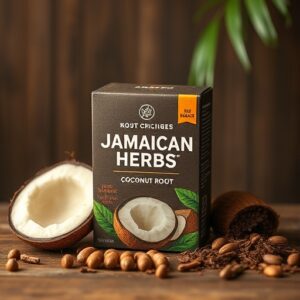Description
Monkey Weed Plant
Explore the healing potential of Monkey Weed Plant, a traditional herb known for its strong medicinal properties. Commonly used in folk medicine, this plant is celebrated for its ability to support immune health, reduce inflammation, and relieve various discomforts. It is particularly known for its calming and purifying qualities, making it an excellent addition to herbal remedies for overall wellness.
Key Benefits:
- Supports immune health and boosts the body’s natural defenses
- Reduces inflammation and alleviates discomfort
- Helps purify the body and promote detoxification
- Traditionally used to support respiratory health
How to Use:
-
As a Tea:
- Boil water and add 1 teaspoon of dried Monkey Weed leaves to a cup.
- Let steep for 10–15 minutes.
- Strain and enjoy.
-
Suggested Use: Drink 1–2 times daily for immune support, detoxification, and general wellness.
Support your body’s natural healing process with the powerful benefits of Monkey Weed Plant!






Fay –
Thanks a lot, Excellent stuff!